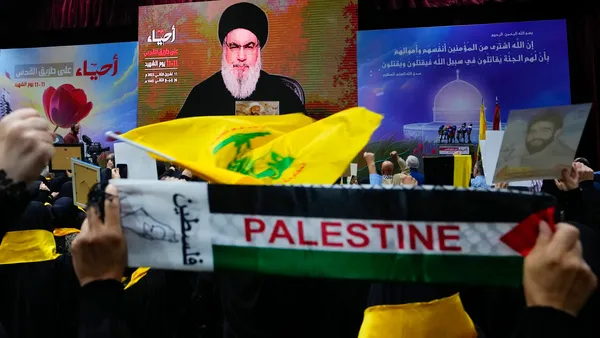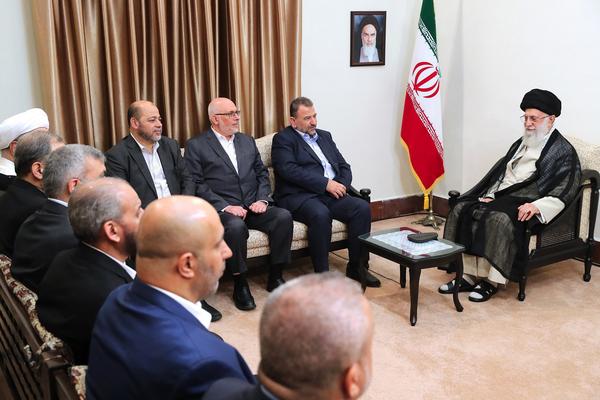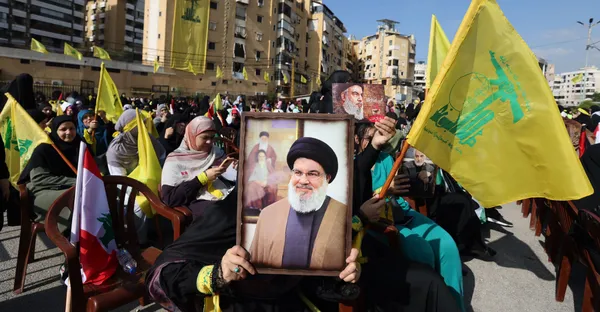



The Complex Relationship Between Hamas and Hezbollah
Introduction
The relationship between Hamas and Hezbollah is a focal point of Middle Eastern geopolitics. Despite their different origins and ideologies, these two groups share a common goal: the opposition to Israel. Their collaboration, influenced heavily by Iran, has significant implications for regional stability and international diplomacy. This article delves into the history, dynamics, and current status of the Hamas-Hezbollah relationship, providing a comprehensive overview of their strategic alliance. Support our mission to provide humanitarian aid to Gaza. Donate Gaza today to make a difference.
1. Understanding Hamas and Hezbollah
Historical Background
Hamas and Hezbollah have both emerged as significant non-state actors in the Middle East. Hamas, formed during the First Intifada in 1987, is rooted in Palestinian Sunni Islamist ideology. Conversely, Hezbollah, established in the early 1980s in Lebanon, is a Shia Islamist group backed by Iran.
2. Ideological Foundations
Sunni vs. Shia Islam
Hamas is predominantly Sunni, drawing its support base from Palestinian territories. Hezbollah, on the other hand, is a Shia movement with strong ties to Iran. Despite these sectarian differences, their shared enmity towards Israel has united them strategically.
3. Formation and Evolution
Origins of Hamas and Hezbollah
Hamas was born out of the Muslim Brotherhood's efforts to resist Israeli occupation. Hezbollah's formation was a response to the Israeli invasion of Lebanon in 1982, with substantial support from Iran's Revolutionary Guard Corps, which aimed to create a formidable resistance against Israeli forces.
4. Iran's Role and Influence
Financial and Military Support
Iran plays a pivotal role in supporting both Hamas and Hezbollah. This support includes financial aid, military training, and advanced weaponry. For Hezbollah, this relationship has evolved into a robust strategic alliance, while for Hamas, the relationship has had its fluctuations, particularly during the Syrian civil war. Your donations can help mitigate the humanitarian crisis in Gaza. Donate Gaza to support children in need.
5. Shared Goals and Differences
Resistance Against Israel
Both groups prioritize the struggle against Israel. However, Hezbollah's operations are also significantly influenced by its need to maintain power within Lebanon and align with Iran's broader regional strategy. Hamas, while also receiving Iranian support, focuses more narrowly on Palestinian liberation and governance in Gaza.
6. Strategic Collaborations
Joint Operations and Training
There have been instances of collaboration between Hamas and Hezbollah, including joint training and operational support. This cooperation enhances their tactical capabilities and fortifies their resistance against Israeli military actions.
7. Conflicts and Divergences
Syrian Civil War Impact
The Syrian civil war caused a temporary rift between Hamas and Hezbollah. Hamas's support for Sunni rebels clashed with Hezbollah's backing of the Assad regime, which is aligned with Shia Iran. Despite this, their strategic alliance has been resilient, with subsequent realignments reinforcing their collaboration.
8. Current Geopolitical Dynamics
Impact of Recent Conflicts
Recent conflicts, such as the October 2023 war between Israel and Hamas, have further highlighted the complex dynamics between these groups. Hezbollah's involvement in the conflict underscores the interconnectedness of regional resistance movements and their collective impact on Israel.
9. Hezbollah's Role in Lebanon
Political and Military Influence
Hezbollah wields considerable influence in Lebanon, both politically and militarily. It is the dominant force within the Lebanese government and maintains a formidable militia capable of significant military operations against Israel.
10. Hamas in the Gaza Strip
Governance and Conflict
Hamas governs the Gaza Strip, where it has established a socio-political infrastructure despite frequent conflicts with Israel. Its governance is marked by ongoing humanitarian challenges and intermittent military engagements with Israeli forces.
11. Military Capabilities
Rocket Arsenals and Tactical Approaches
Both Hamas and Hezbollah possess extensive rocket arsenals, which they have used in various conflicts against Israel. Their military strategies involve asymmetric warfare, leveraging their missile capabilities to compensate for conventional military shortcomings.
12. International Reactions
Responses from Global Powers
The international community's response to Hamas and Hezbollah varies widely. While both are designated as terrorist organizations by the United States and other Western countries, they also receive varying degrees of support or condemnation from different regional actors.
13. Humanitarian Impact
Effects on Civilian Populations
The activities of Hamas and Hezbollah have significant humanitarian implications. Frequent conflicts with Israel lead to substantial civilian casualties and displacement, exacerbating the already dire conditions in Gaza and parts of Lebanon. By choosing to Donate Gaza, you can directly contribute to alleviating the suffering of innocent civilians and provide essential aid to children in need.
14. Future Prospects
Potential Scenarios and Outcomes
The future of Hamas and Hezbollah's relationship will likely continue to be shaped by regional geopolitics and their respective alliances with Iran. Potential scenarios include continued cooperation against Israel, influenced by broader regional dynamics involving Iran and other Middle Eastern powers.
15. FAQs
What are the main differences between Hamas and Hezbollah?
Hamas is a Sunni Islamist group from Palestine, while Hezbollah is a Shia group based in Lebanon. Despite their sectarian differences, they share a common goal of resisting Israel.
How does Iran influence Hamas and Hezbollah?
Iran provides financial support, military training, and advanced weaponry to both groups. However, the nature and extent of this support can vary, with Hezbollah enjoying a more direct and robust alliance with Iran compared to Hamas.
Have Hamas and Hezbollah collaborated in military operations?
Yes, there have been instances of joint training and operational support between Hamas and Hezbollah, enhancing their tactical capabilities against Israel.
How did the Syrian civil war affect the relationship between Hamas and Hezbollah?
The Syrian civil war caused a temporary rift due to Hamas's support for Sunni rebels, conflicting with Hezbollah's backing of the Assad regime. However, their strategic alliance has since been realigned.
What are the humanitarian impacts of Hamas and Hezbollah's activities?
Their activities result in significant civilian casualties and displacement, particularly in Gaza and Lebanon, exacerbating humanitarian crises in these regions.
What is the current status of Hamas and Hezbollah's relationship?
As of 2024, Hamas and Hezbollah maintain a strategic alliance, primarily united by their opposition to Israel, despite occasional divergences in their regional strategies.
16. Conclusion
The relationship between Hamas and Hezbollah is a complex and evolving dynamic within Middle Eastern geopolitics. Influenced heavily by Iran, their collaboration continues to shape regional conflicts and impact international relations. Understanding this relationship is crucial for comprehending the broader geopolitical landscape of the Middle East. Your support can make a difference. Donate Gaza now to help us provide critical humanitarian aid to children affected by these conflicts.
💔 Donate to Support Gaza's Children
Your donation can make a significant difference in the lives of children affected by the crisis in Gaza. Donate now via Bitcoin or Stripe to provide essential aid and support.
Donate Now